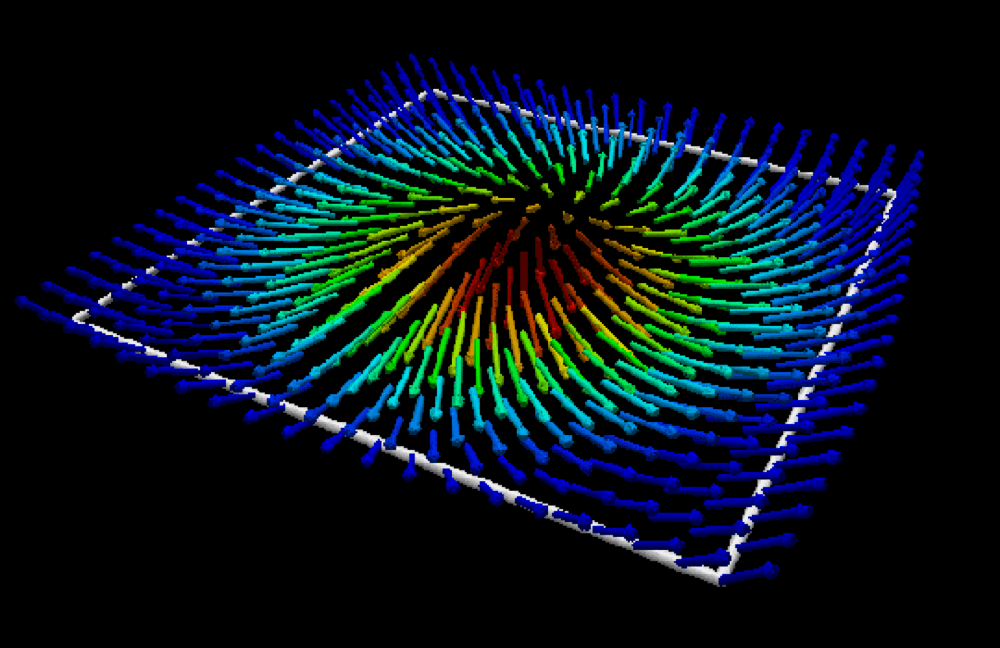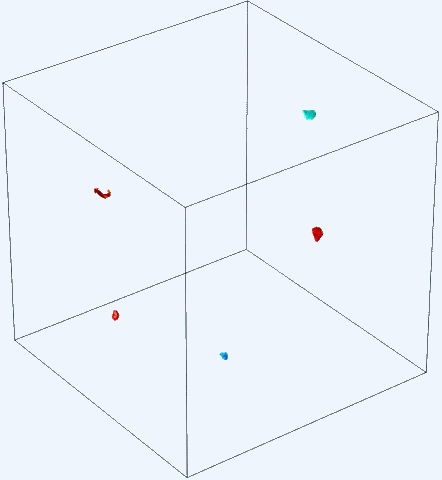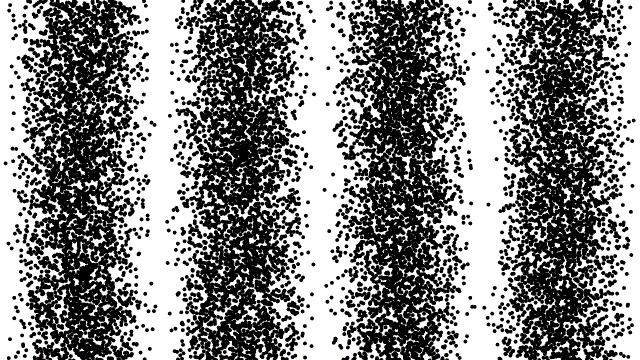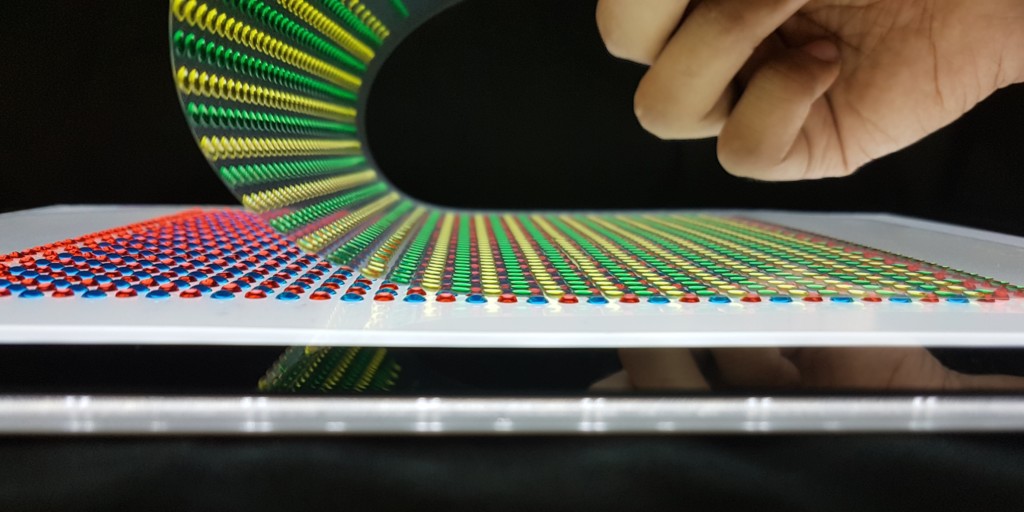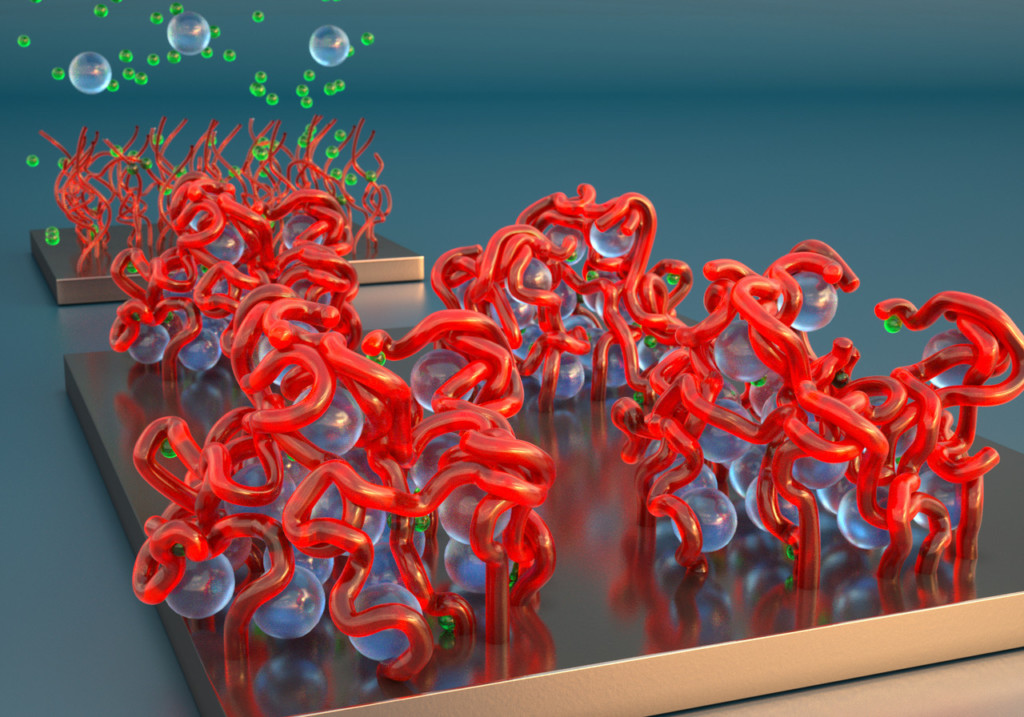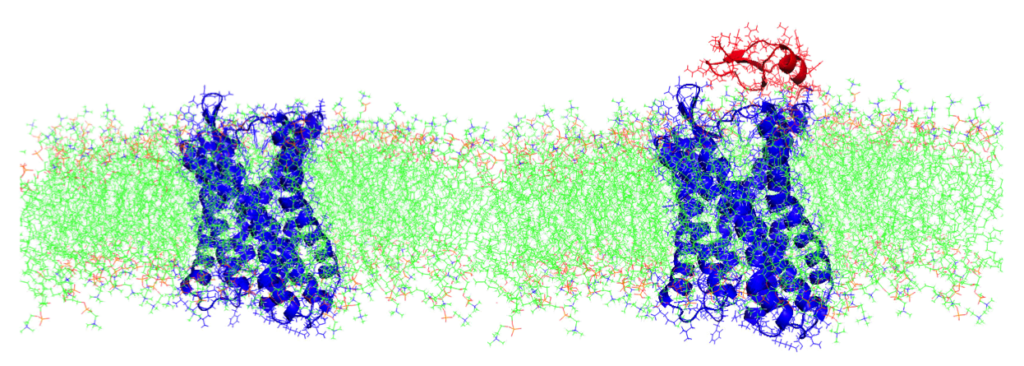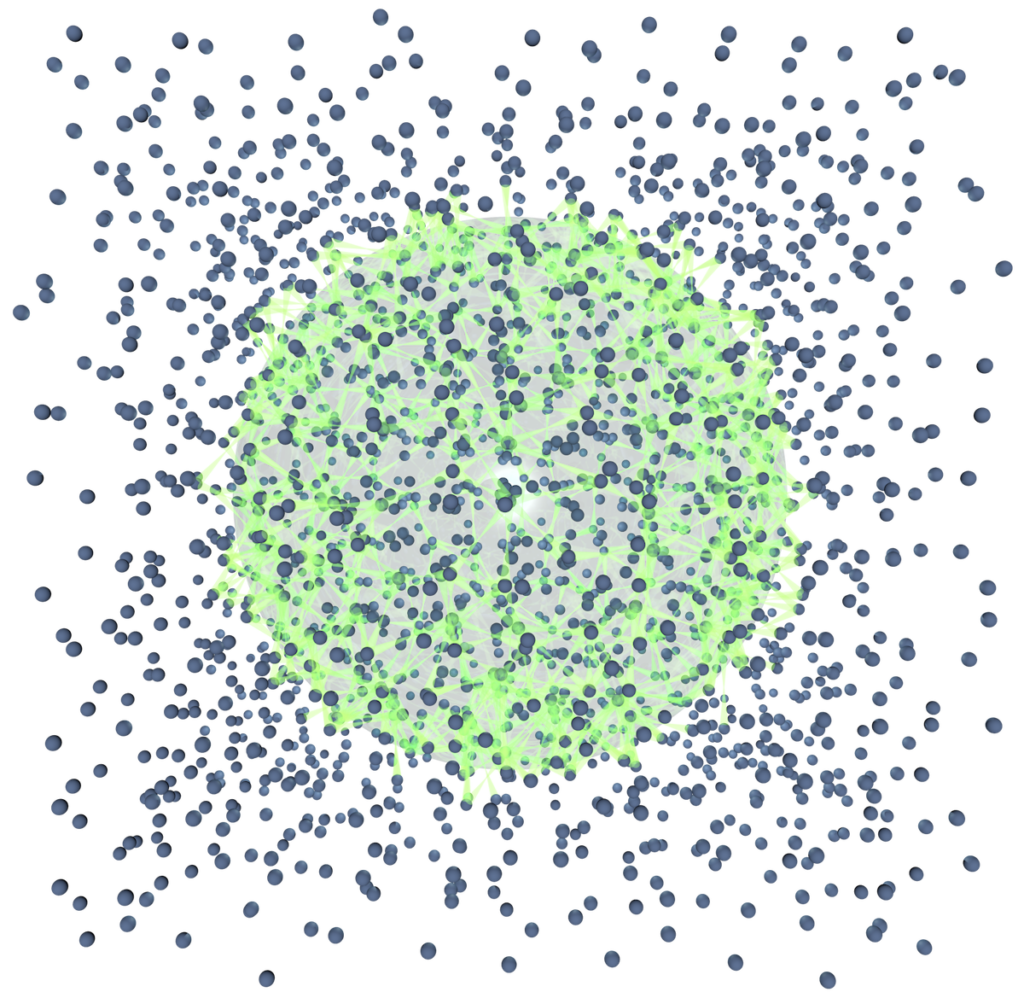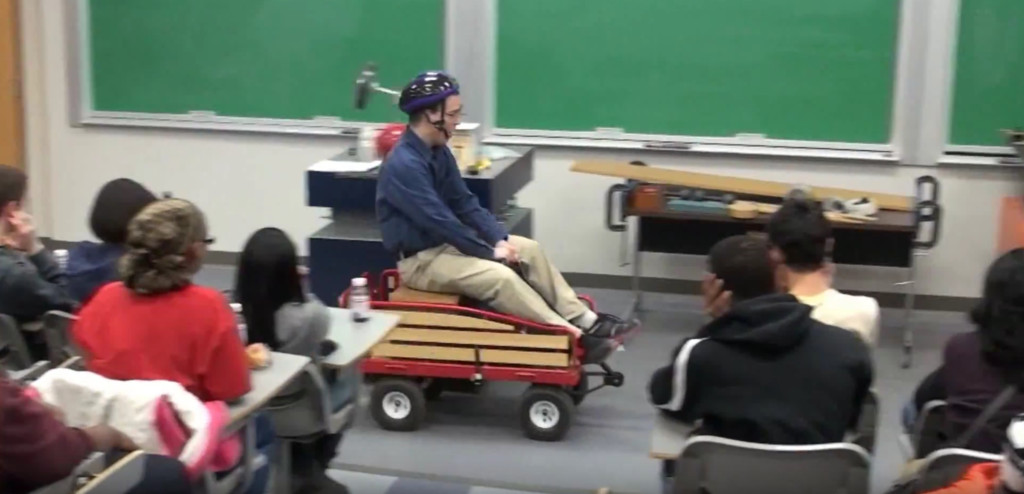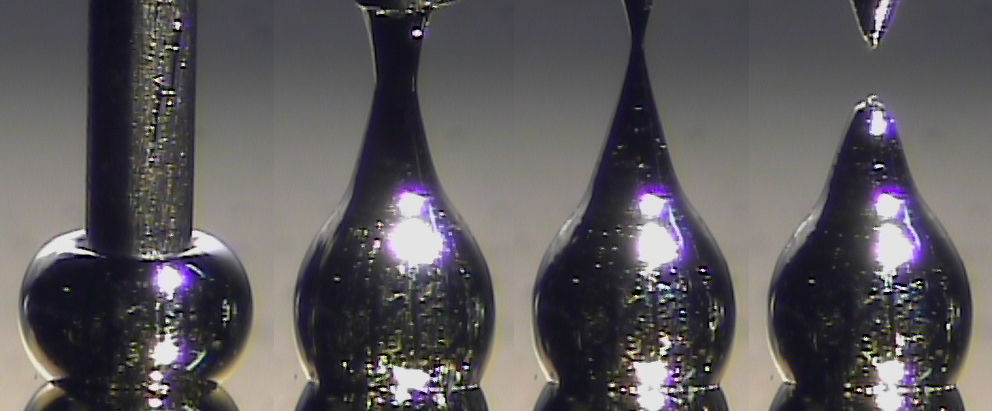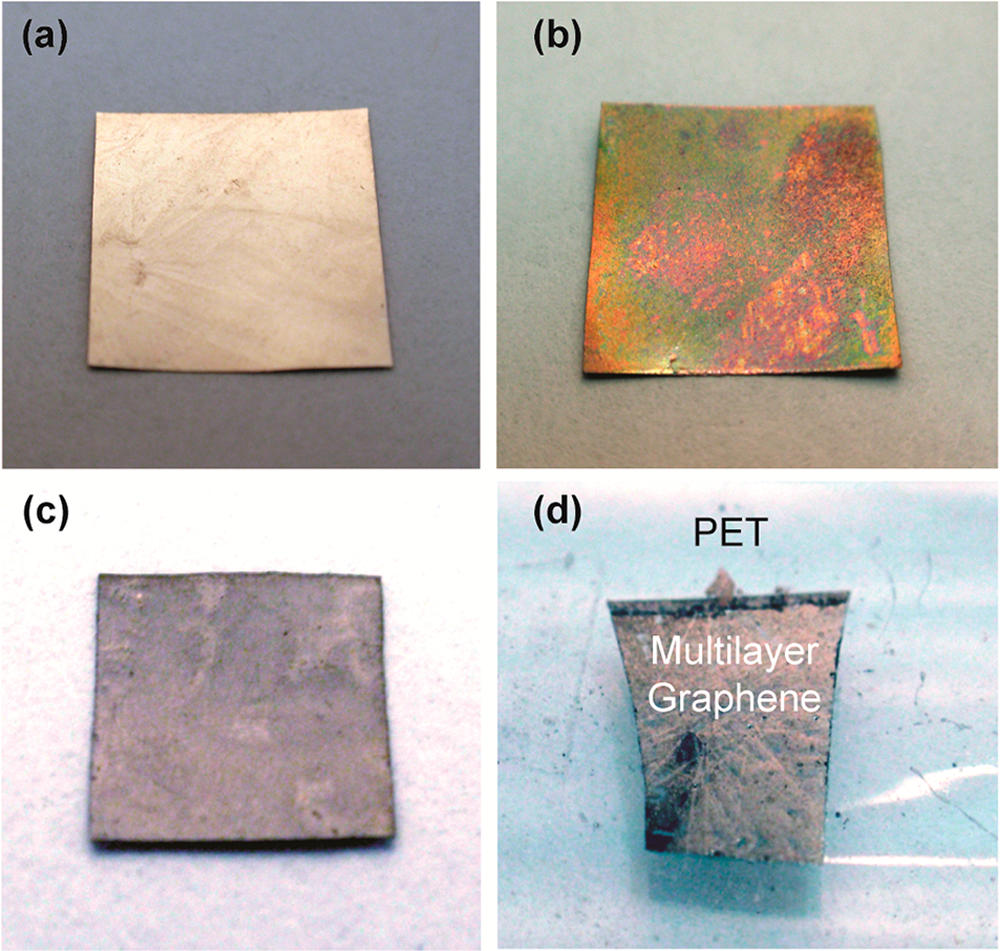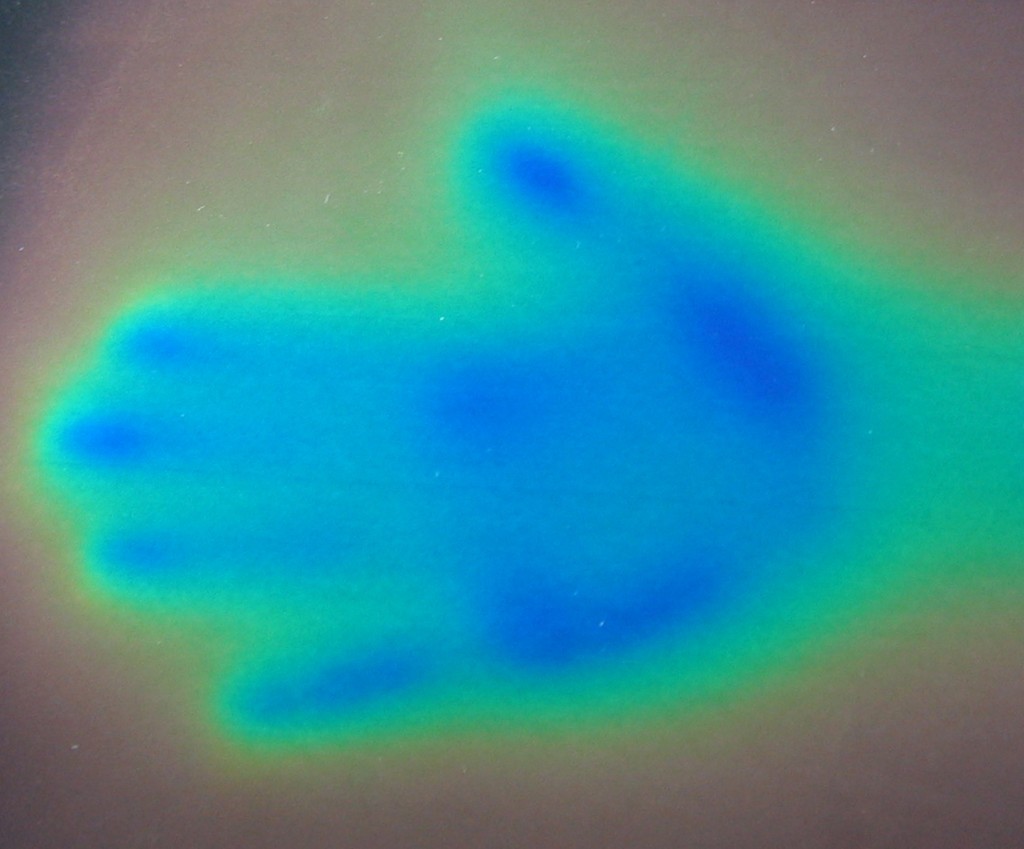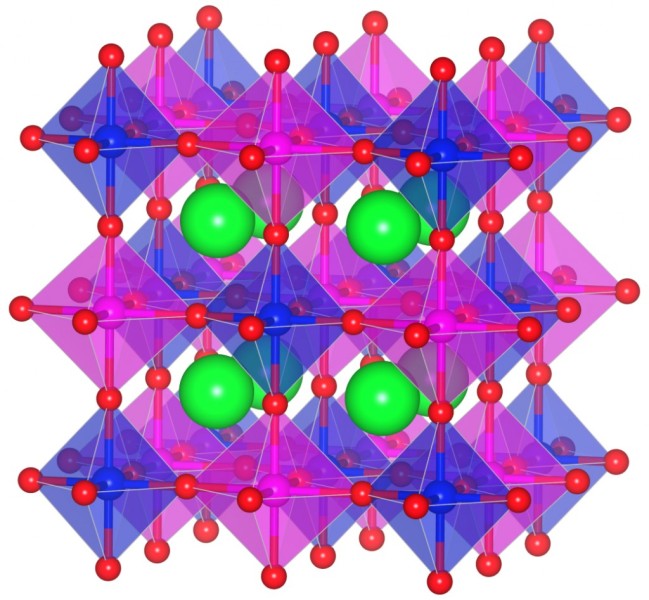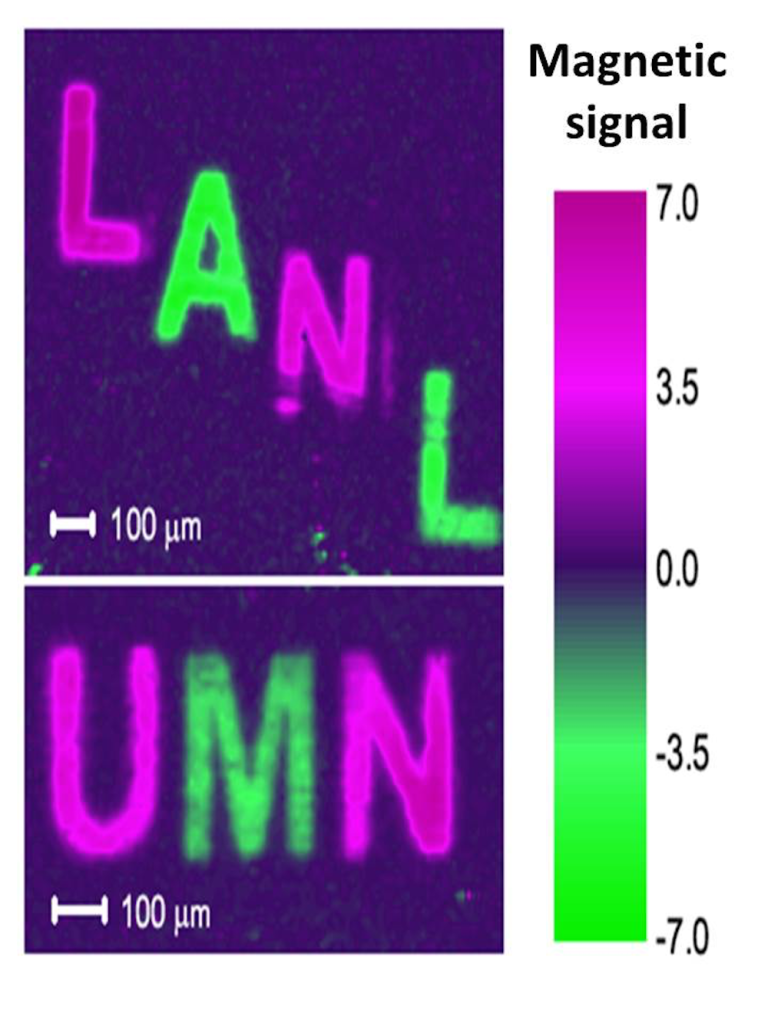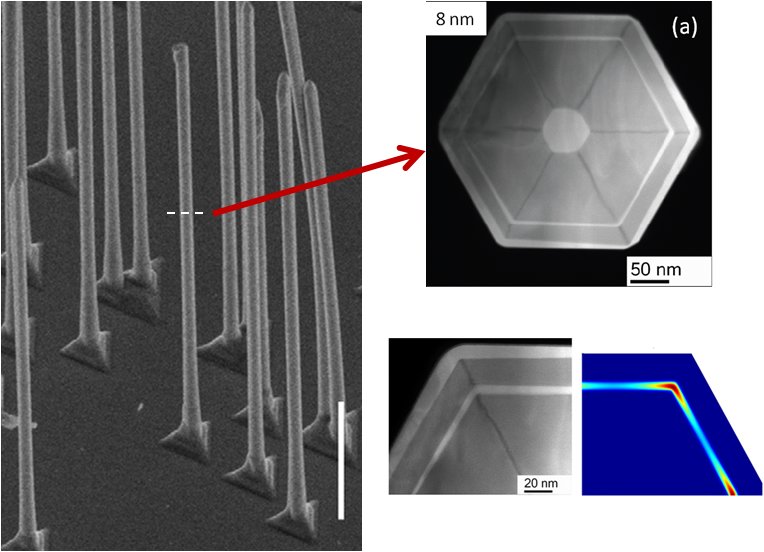ALL POSTS
Real, live scientists sharing cutting-edge research and related classroom activities.
Spins and Skyrmions
Recent progress in materials science has led to the creation of new magnetic materials in which the magnetism follows complex patterns. The formation of these patterns depends on a phenomenon called spin-orbital coupling. Because they can be manipulated by electric currents and temperature changes, materials exhibiting these interesting magnetic patterns may have applications in magnetic memories and logic devices. Click to learn how!


Melting and Freezing Bits and Bytes
In phase-change memory (PCM), nanoscale volumes of a special kind of glass compound are heated by very short electrical pulses, causing the atomic structure of the material to switch between an ordered phase and a disordered phase. These phase-change materials have been used for years to store data on rewritable CDs and DVDs, but until recently, the large energy required to change the state of the material has made it impractical for electronic memory. If this challenge can be overcome, phase-change memory can be integrated with conventional silicon electronics for high-capacity data storage and more efficient computation. Click to read more about how we are working to make this new technology a reality!


New World Disorder
We tend to think of materials as either electrical conductors or insulators: some materials, like metals, have low electrical resistance and conduct electricity easily, while others, like wood or plastic, have high electrical resistance and do not readily conduct electricity. Strange experimental results, however, reveal large fluctuations in the electrical resistance of thin metallic nanowires when a magnetic field or charge difference is applied to them. Click to learn how a more nuanced understanding of electron behavior helps to explain these variations in electrical resistance that may revolutionize the tech industry!


The Turbulent Tangle of Quantum Vortices
You may know helium as the gas that can make balloons and blimps float. At the University of Maryland, scientists are using this element to study the exotic physics of quantum vortices: the tornadoes or bathtub-drain whirls of the quantum world. Knowing how quantum vortices work could help us better understand other turbulent events (like wind and ocean currents), as well as the complex physical behavior of superconductors and neutron stars.


Bioelectricity, Reimagined
The electric eel's ability to generate incredibly large amounts of electric power from within its body has fascinated scientists for centuries. In fact, some of the world’s first batteries were inspired by studies of this amazing animal. Now, scientists have developed a new eel-inspired energy source that may one day be used to power electronics implanted within the human body.


Creating nanoscale octopus structures from polymer brushes
Very small structures, much smaller than the human eye can see, often fall in the size range of nanometers. By understanding how the molecules that make up these structures interact, we can engineer them to do many special things that cannot be done at a larger scale. One exciting structure is a polymer brush, in which long, chain-like molecules called polymers are tethered at one end to a surface and stick up from the surface like bristles on a hairbrush. Polymer brushes can be used to keep bacteria away, provide an exceptionally smooth surface for items to slide across, or trap other molecules in solution like a hairbrush traps loose hair. In order to engineer polymer brushes that will perform as desired for a given application, we must understand the physics of how the molecular bristles move, and the chemistry of how they interact with their environment.


Games Proteins Play
Biophysics is a field that applies knowledge of physics to understand and explain biological phenomena. Biophysicists study life at different levels, from atoms and molecules to cells, organisms, and their environments. They focus on questions such as how proteins function, how nerve cells communicate, how viruses invade human cells, how plants absorb sunlight and convert it into food, and so on. Biophysics has contributed significantly to improving human health in multiple ways, and the study of protein-protein interactions is an especially important biophysical topic. By exploring the molecular basis of complicated biomedical diseases, biophysicists help to develop methods to treat these diseases.


Superfluid helium and black holes
At low temperatures, helium—the same substance that makes balloons float—becomes a special type of liquid known as a superfluid, which has zero viscosity. It's like the anti-molasses! The properties of superfluids are governed by the laws of quantum mechanics. More specifically, the atoms in superfluid helium are “entangled” with each other, allowing them to share information and influence each other’s behavior in ways that are totally foreign to our everyday experience, and which Einstein famously described as "spooky action at a distance." Better still, scientists have recently discovered that the law controlling entanglement between different parts of a helium superfluid is the same as that governing the exotic behavior of black holes in outer space.


Physics Wonder Girls!
Research shows that, among girls, interest in science is most likely to wane during the middle school years. Our Physics Wonder Girls Camp provides three days of physics-based experiments, fun demonstrations, and contact with women scientists to plant and sustain middle-school girls' interest in science in general, and physics in particular.


Interacting with the World’s Universal Building Blocks
AtomTouch is a free, interactive molecular simulation app, created by researchers at the University of Wisconsin Materials Research Science and Engineering Center (UW MRSEC) to allow learners to explore principles of thermodynamics and molecular dynamics in an tactile, engaging way.


We Blinded Them With Science!
(But Not Literally, Because Everyone Wore Safety Goggles) This video showcases the highlights of Jeremy Levy's physics demonstrations for the Investing Now program at the University of Pittsburgh, through which students explored Newton's laws of motion, optical phenomena, and the delicious effects of liquid nitrogen on cream and sugar.


Using Liquid Metals to Draw Functional Circuits
Most electronics are made out of rigid materials like silicon, but it is possible to make wires and other electronics using entirely soft and squishy materials. By utilizing liquid metal nanoparticles, we can even draw wires by hand using light pressure from a magic marker to squish the particles together.


Make 21st-Century Wonder Material Graphene Cheaply and Easily in the Classroom!
Graphene is a two-dimensional material made from a single sheet of atoms, with outstanding mechanical, electronic, and thermal properties. It is a promising candidate to enable next-generation technologies in a wide range of fields, including electronics, energy, and medicine. This economical, safe, and simple lab activity allows students to make graphene via chemical vapor deposition in 30–45 minutes in a classroom setting.


Superpowers of Liquid Crystals
It's a solid . . . it's a liquid . . . it's a LIQUID CRYSTAL! Researchers at the University of Wisconsin-Madison Materials Research Science and Engineering Center are investigating how the unique properties of liquid crystals allow them to act as environmental sensors, detecting toxins in the environment. In this video, we give a brief overview of what liquid crystals are and how their properties can be utilized to improve the world.


Crystals and Spintronics
Many solid materials have a crystal structure, with atoms that exist in a particular, organized arrangement. The degree of organization can vary among crystals, however. High-quality crystalline materials are the foundation of many familiar devices, such as integrated circuits and solar cells. A better understanding of these materials and how to produce them is important for developing new technologies.


Carbon Onions
Carbon-based nanostructures are among the most intensely studied systems in nanotechnology. Potential practical applications span the fields of medicine, consumer electronics, and hydrogen storage, and they could even be used to develop a space elevator. A research team at the University of Northern Iowa is probing the properties of multilayered carbon nanostructures known as "carbon onions."


How to Make a Quantum Laser Pointer
Scientists and engineers are making smaller and smaller structures designed to control the quantum states of electrons in a material. By controlling quantum mechanics, we can create new materials that do not exist in nature, develop more efficient solar cells and faster computer chips, and even discover exotic new states of matter.


The Shape of the Future
There are many ways atoms can arrange microscopically to form crystalline materials. Interestingly, materials created from different arrangements of the same atoms may exhibit completely different physical and chemical properties. A method called thin film epitaxy allows scientists not only to fine-tune the properties of known materials, but also to generate completely new materials with structures and properties not found in nature.





